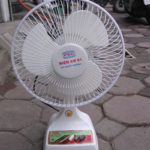Why does the moon shine?
At night, you can see the brightly shining moon in the sky. Especially on full moon nights. But in reality, the moon is gray because its surface contains pyroxene, basalt, silica, oxygen, calcium, aluminum, iron, magnesium.
Originally, the moon is not silver like we see it every night but it shines because it reflects sunlight. In other words, the moonlight is not its own light. The sunlight hits a part of the moon’s surface and then reflects back to the Earth.

Interesting facts about the moon
The moon formed after a giant collision
According to the leading hypothesis about the moon’s origin, an object the size of Mars collided with the Earth early in the Earth’s history. The collision created fragments that orbited our planet. Over time, the fragments from the Earth and the object came together and formed the moon as we see it today.
The moon has dancing dust particles
During moonrise and moonset, dust tends to float above the surface. This may be due to electrostatic charging of the particles or some other phenomenon at work.
Solar eclipses are very rare
Looking at the Earth’s sky, the size of the moon and the sun are approximately the same. When the moon’s orbit aligns with the sun (from the Earth’s perspective), sometimes it can perfectly cover the star. When this happens, you will see the corona of the sun – its super-heated atmosphere – shimmering around the circumference. However, we will not be able to see the corona if the sun is much smaller or much larger.

The moon always keeps one face towards the Earth
In the past, the moon’s rotation speed was different from the Earth. But over time, the gravitational pull of the Earth has caused different parts of the moon to get locked together. The mass of the moon has also shifted more towards the Earth and its self-rotation around its own axis got “locked” so that it only faces one side towards the Earth.
The moon has no atmosphere
The moon does not have an atmosphere like the Earth, so it is not protected from cosmic radiation, meteoroids, and temperature variations. The lack of an atmosphere also means that there is no sound on the moon and the sky always appears black.
The US once planned to nuke the moon
In 1958, the US planned to detonate a nuclear bomb on the moon. This was a classified project during the height of the Cold War called “Study of Lunar Research Flights” or “Project A119”. It was intended as a show of power at a time when the US was falling behind in the space race. However, the project was later abandoned by military officials out of concern that it would pose a danger to humans on Earth if it failed.

There is water on the moon
Water on the moon freezes and is hidden in permanently shaded lava tubes. The water on the moon could be from solar wind or from comet impacts. Scientists are still studying and it is uncertain whether there is enough water there to sustain a human colony or not.
The moon is the fifth largest natural satellite
In our Solar System, the moon is the fifth largest natural satellite. Its diameter is 3,475 km, much smaller than the main moons of Mars and Earth.
Only 12 people have walked on the moon
In human history, only 12 people have set foot on the moon. The first person was Neil Armstrong in 1969 in the Apollo 11 mission. The last person was Gene Cernan in 1972 in the Apollo 17 mission. All 12 people were from the United States. Since 1972, humans have not returned to the moon.






































